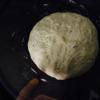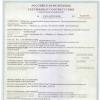Eye drops chloramphenicol indications for use. Eye drops "Levomitsetin" for children. Dosage and method of application
For one vial (10 ml or 5 ml):
active substance: chloramphenicol - 25.0 mg or 12.5 mg;
Excipients: boric acid, water for injection.
Pharmacotherapeutic group
Means used in ophthalmology. Antimicrobial agents.
ATS code: S01AA01.
pharmachologic effect
A bacteriostatic broad-spectrum antibiotic that disrupts the process of protein synthesis in a microbial cell. Effective against strains of bacteria resistant to penicillin, tetracyclines, sulfonamides. Active against: Escherichia coli, haemophilus influenzae, Klebsiella pneumoniae, some species of Enterobacter and Neisseria, Staphylococcus aureus, Streptococcus spp. (including Streptococcus pneumoniae, Streptococcus hemolyticus), Moraxella lacunata, rickettsia and mycoplasmas. Ineffective against Pseudomonas aeruginosa, Serratia marcescens.
Indications for use
Bacterial infections eyes caused by sensitive microflora: conjunctivitis, keratitis, blepharitis, blepharoconjunctivitis, keratoconjunctivitis.
Method of application and dosing regimen
The drug is applied topically in the form of instillations into the conjunctival sac, 1-2 drops 3-4 times a day. Treatment should last no more than 5 days, even if the condition improves.
Elderly patients (over 65 years of age). Dose adjustment is not required.
Recommendations for the use of vials with dropper caps: before using the drug, remove the aluminum cap from the vial, remove the rubber stopper and close the vial with a dropper cap, previously released from the packaging. Then remove the cap from the dropper cap, turn the vial over, drip the required number of drops of the drug. After use, return the vial to vertical position and put the cap on the dropper cap.
Side effect
From the side of the organ of vision: short-term irritation, burning, itching, conjunctival hyperemia.
From the side immune system: hypersensitivity reactions, angioedema, anaphylaxis, urticaria, fever, dermatitis.
From the blood and lymphatic system: there is some information about the development of hypoplasia bone marrow and aplastic anemia after the use of ophthalmic forms of chloramphenicol.
In case of occurrence adverse reactions, including those not listed in this leaflet, you should consult a doctor.
Contraindications
Hypersensitivity to levomycetin (as well as to thiamphenicol, azidamphenicol), inhibition of bone marrow hematopoiesis, acute intermittent porphyria, deficiency of glucose-6-phosphate dehydrogenase, hepatic and / or kidney failure, myelosuppression against the background of the use of chloramphenicol in history, myelosuppression in a personal or family history, skin diseases (psoriasis, eczema, fungal infections), pregnancy, lactation (rejection is mandatory breastfeeding), children under 2 years of age.
WITH caution should be applied in childhood, in patients previously treated with cytotoxic drugs or radiation therapy.
Overdose
It is unlikely that accidental ingestion eye drops will have a systemic toxic effect due to little content chloramphenicol. If pain, swelling, lacrimation or photophobia develop, flush the affected eye with water for at least 15 minutes. If the above symptoms persist, you should consult a doctor.
Precautionary measures
Prolonged use of Levomycetin eye drops should be avoided, as there is a possibility of hypersensitivity and the emergence of resistant microorganisms.
The composition of the drug includes boric acid, which can cause toxic reactions.
Chloramphenicol is subject to systemic absorption from the eyes, and cases of toxicity have been reported with chronic exposure. There is information on bone marrow hypoplasia, including aplastic anemia and death, after topical application of chloramphenicol. Although the danger is rare, the ratio between the expected risk and benefit should be assessed before using the drug. When using the drug on a long-term or intermittent basis, it is advisable to perform routine blood tests before starting therapy and at appropriate intervals thereafter to detect any changes in hematopoiesis.
Precautions are prescribed to patients who have previously received treatment with cytotoxic drugs or radiation therapy.
Patients should see a doctor if any of the following conditions occur: visual impairment; severe pain in the eyes; photophobia; the appearance of rashes on the face and head; the eye looks cloudy; the pupil looks unusual; there was a feeling foreign body in the eye.
Patients should be sure to tell the doctor about:
- previous conjunctivitis;
- glaucoma;
- dry eye syndrome;
– eye surgery or laser therapy within the last 6 months;
– eye injury;
– current use of other eye drops or eye ointment;
- wearing contact lenses.
Contact lenses should not be worn during the course of treatment. Soft contact lenses should not be worn for 24 hours after completion of treatment.
Use during pregnancy and lactation
In animal studies, it has been established that chloramphenicol has embryotoxic and teratogenic effects. Chloramphenicol passes through the placenta. The safety of the use of eye drops during pregnancy has not been established, so the use is contraindicated. Chloramphenicol is excreted in breast milk. During the use of eye drops, systemic absorption of the drug is not excluded. Therefore, due to the risk of serious adverse reactions in children, use during breastfeeding is contraindicated.
Influence on the ability to drive vehicles andpotentially dangerous mechanisms
Eye drops may cause temporary blurred vision. Patients should not drive or operate machinery until vision is restored.
Interaction with other drugs
Simultaneous use of chloramphenicol with drugs that inhibit hematopoiesis (sulfonamides, cytostatics), affecting the metabolism in the liver; With radiation therapy increases the risk of side effects. Therefore, such combinations should be avoided.
Levomycetin is well known to adults as an inexpensive and effective remedy with intestinal infections and poisoning, helping to quickly eliminate vomiting and diarrhea. One form of such an antibiotic is 0.25% eye drops. When are they prescribed, are they allowed in childhood, and what drugs can be replaced?
Release form
Levomycetin in the form of eye drops is a clear liquid without any shade, packed in a polyethylene dropper bottle or in a glass bottle, on which a dropper cap is put on. One vial contains 5 or 10 ml of medication.

In addition to eye drops. Levomycetin is also produced in the following forms:
- tablets;
- capsules;
- coated tablets;
- alcohol solution for outdoor use.
Ointment, ampoules for injection, gel, suspension and other forms of this drug are absent.

Compound
The active ingredient of the drug is chloramphenicol, which contains 2.5 mg per 1 ml of drops. In addition to it, the solution still contains purified water and boric acid. There are no other ingredients in this medication.
Operating principle
Levomycetin is a bacteriostatic antibiotic that can disrupt the synthesis of protein molecules in microbial cells. Because it active ingredient is fat-soluble, it easily passes through the cell membranes of bacteria, and then binds to their ribosomes. This provokes a delay in the movement of amino acids, as a result of which the peptide chains do not increase and proteins are not formed.
The spectrum of antimicrobial effects of drops is quite wide. The drug is active against Haemophilus influenzae, Klebsiella, gonococcus, streptococcus, Escherichia coli, Staphylococcus aureus, Moraxella, pneumococcus and some other microorganisms. It acts on many strains that are insensitive to sulfa drugs, tetracyclines and penicillins.
Like other antibiotics, Levomycetin is ineffective for viral eye infections, and in tablets this medicine does not work with rotovirus.


Indications

From what age is it used in children?
There are no age restrictions for Levomycetin eye drops. However, the instructions for the medication noted that it should be used in newborn babies with extreme caution. Children in early age dripping such an antibiotic without the supervision of a specialist is unacceptable. And for a child who is 3 years old or more, the use of Levomycetin without a preliminary examination by a pediatrician or ophthalmologist is undesirable.

Contraindications
The medicine is forbidden to drip when:
- Hypersensitivity to chloramphenicol or boric acid.
- liver failure.
- Lack of glucose-6-phosphate dehydrogenase.
- Acute intermittent porphyria.
- Renal failure.
- Inhibition of hematopoiesis in the bone marrow.
If a small patient has any skin disease (for example, a fungal infection, eczema or psoriasis), Levomycetin is dripped with caution.

Side effects
Some children experience a local allergic reaction after using the drops. It can be manifested by severe tearing, itching in the eyes, redness, burning sensation, skin rash and other symptoms. When they appear, treatment with drops should be stopped immediately.
If Levomycetin therapy is too long, it can affect hematopoiesis and provoke thrombocytopenia, leukopenia and erythrocytopenia up to the development of aplastic anemia.
Under the influence of the drug, the number of granulocytes may decrease to complete agranulocytosis. Sometimes a fungal infection (secondary) also develops.
Instructions for use
- Having laid the child down or seated the baby and tilting his head back, gently pull the lower eyelid down and, turning the bottle over, place it over the eye. Next, the medicine is dripped into each eye one drop at a time, pressing on the dropper nozzle, but not allowing the tip of such a nozzle to touch the body. In some cases, a single dose of Levomycetin will be not one, but two drops.
- Even if an infectious lesion of only one eye is found in a small patient, both eyes should always be dripped. This will prevent the spread of bacteria.
- The frequency of injection of the solution into the conjunctival sac should be determined by the doctor. There may be an interval of one to four hours between instillations.
- The duration of treatment with drops is also determined individually. If the medication is prescribed for a long course, then a blood test should be done regularly to prevent damage to the bone marrow.

Overdose
The manufacturer does not provide any information about the negative effect of drops when their dosage is exceeded.
Interaction with other drugs
Treatment with Levomycetin may increase side effects from the use of drugs that depress metabolic processes in the liver or affect hematopoiesis. For this reason, drops are not combined with cytostatic drugs, hypoglycemic oral medications, indirect anticoagulants or sulfa drugs.
If you prescribe a medicine along with antibiotics containing lincomycin, clindamycin or erythromycin, the effect of both these drugs and Levomycetin will be weaker.
In addition, chloramphenicol has the ability to reduce the therapeutic effect of cephalosporin and penicillin antibiotics.
Terms of sale
To purchase Levomycetin in the form of eye drops in a pharmacy, you first need to visit an ophthalmologist, pediatrician or other specialist to get a prescription. On average, the price of one bottle of drops is 12-15 rubles.

Storage conditions
So that the medicine does not lose its properties, it is recommended to store it in a place protected from sunlight and high humidity. The optimum storage temperature is considered below +25 degrees Celsius. The place where the drops will lie should also be inaccessible to small children.
The shelf life of drops that have not yet been opened is 2 years. After the first use of the medication, the contents of the vial can be instilled into the eyes only for 30 days.


If more than a month has passed after opening, and there is still a solution inside the bottle, it must be discarded. It is unacceptable to drip an expired drug into the eyes.
Dosage form
Eye drops 0.25%
Compound
chloramphenicol;
Excipients: calcium stearate, potato starch, low molecular weight povidone
Pharmacodynamics
Broad spectrum antibiotic. The mechanism of antimicrobial action is associated with a violation of the synthesis of proteins of microorganisms. Acts bacteriostatically. Active against gram-positive (Staphylococcus spp., Streptococcus spp.) and gram-negative cocci (Neisseria gonorrhoeae, N. meningitidis), bacteria (Escherichia coli, Haemophilus influenza, Salmonella spp., Shigella spp., Klebsiella spp., Serratia spp., Yersinia spp., Proteus spp.), rickettsiae, spirochetes, some large viruses. The drug is active against strains resistant to penicillin, streptomycin, sulfonamides. Microbial resistance to chloramphenicol develops relatively slowly
Pharmacokinetics
When taken orally, about 90% of the drug is absorbed from the gastrointestinal tract. Communication with protein 45-50%.
The maximum concentration of the drug in the blood is determined 2-3 hours after oral administration. The half-life is 3.5 hours.
The highest concentration of the drug is created in the liver, kidneys, the lowest - in the brain tissues. It penetrates well into the environment of the eye (except for the lens) and is contained in the cerebrospinal fluid at a concentration of 30-50% of its level in the blood. Levomycetin penetrates the hematoplacental barrier and is determined in breast milk(20-50% of its blood level).
Side effects
Possible development allergic reactions.
Selling Features
Released without a prescription
Special conditions
Severe complications from the hematopoietic system, as a rule, are associated with the use of large doses (more than 4 g / day) for a long time. In the process of treatment, systematic monitoring of the picture of peripheral blood is necessary.
In the fetus and newborns, the liver is not sufficiently developed to bind chloramphenicol, and the drug can accumulate in toxic concentrations and lead to the development of "gray syndrome", therefore, in the first months of life, the drug is prescribed to children only for health reasons.
Be wary appoint patients who have previously received treatment with cytotoxic drugs or radiation therapy.
Indications
Prevention and treatment infectious diseases eye:
conjunctivitis;
Blepharitis;
Keratitis.
Contraindications
Inhibition of hematopoiesis;
Skin diseases (psoriasis, eczema, fungal diseases);
Pregnancy;
newborn babies;
Individual intolerance to the drug.
drug interaction
Simultaneous administration with drugs that inhibit hematopoiesis (sulfonamides, cytostatics), affecting the metabolism in the liver, with radiation therapy increases the risk of side effects.
With the simultaneous reception of the standard, the development of a disulfiram reaction is possible (hyperemia of the skin, tachycardia, nausea, vomiting, reflex cough, convulsions).
When prescribing oral hypoglycemic drugs, there is an increase in their action (due to the suppression of metabolism in the liver and an increase in their concentration in plasma).
With simultaneous use with erythromycin, clindamycin, lincomycin, a mutual weakening of the action is noted due to the fact that chloramphenicol can displace these drugs from the bound state or prevent them from binding to the 50S subunit of bacterial ribosomes.
Reduces the antibacterial effect of penicillins and cephalosporins
Prices for Levomycetin in other cities
Buy Levomycetin,Levomycetin in St. Petersburg,Levomycetin eye drops medicine local application with a wide range impact. This drug effective against most gram-positive and gram-negative bacteria, large viruses, as well as rickettsiae and spirochetes. Let's find out the composition of the drops, how they should be used, at what age they are prescribed to children and which ones they will get rid of.
The composition of the drops "Levomycetin"
Levomycetin are available in sterile vials of 5 and 10 ml. Percentage active ingredient to the total volume of the drug is 0.25%. This means that 1 ml of the prepared solution contains 25 mg of chloramphenicol. Purified water and boric acid act as auxiliary substances. are antibiotics with a bacteriostatic effect. They are effective in combating microorganisms resistant to penicillin, tetracycline antibiotics and sulfonamides. Although the drug is characterized as a topical agent, drops can partially penetrate the blood supply, which does not harm the body.
How to use the drug and what diseases it treats
Levomycitin eye drops are prescribed for the treatment of:
- conjunctivitis;
- keratitis;
- blepharitis;
- keratoconjunctivitis.

These diseases are inflammatory processes bacterial origin, which are localized in the cornea or conjunctiva. The mechanism of fighting bacteria is to disrupt the synthesis of proteins of microorganisms. The agent is instilled into each eye 1-2 drops at the onset of the disease up to 5 times a day, and when improvement is noticeable, 3 times is enough. The duration of use is determined by the attending physician, while it is not recommended to use Levomycetin drops for longer than 14 days. Instructions for children do not focus on the age at which the drug can be used, however, ophthalmologists are already fearlessly prescribing it for babies older than a year.
Contraindications and side effects
Levomycitin eye drops are contraindicated for use by people:
- with impaired hematopoiesis;
- with hepatic and renal insufficiency;
- with hypersensitivity to the components of the drug.

It is not recommended to use this remedy for pregnant and lactating women. Only a doctor can prescribe these drops, evaluating possible risk for the child and benefit for the mother. Doctor's supervision is required when using the drug for children from birth to 2 years, as well as for patients with skin diseases(eczema or psoriasis).
In most cases, the use of the agent does not cause side effects, and in rare cases, redness, burning and itching in the eyes are possible. If used for more than 3 weeks, there may be disturbances in circulatory system(leukopenia, thrombopenia, aplastic anemia) and the re-development of the fungus. In this case, you need to stop the drug and prescribe another treatment, depending on the symptoms. People wearing contact lenses need to remove them before instillation and put them on after 40 minutes. Such a medicine is very cheap, for drops of Levomycetin the price varies from 10 to 30 rubles per 10 ml bottle.
Eye drops chloramphenicol (Laevomycetinum) is a drug that is one of the inexpensive medical products. The drug has been widely used in ophthalmic practice how effective antibiotic, successfully involved in the fight against infectious and inflammatory diseases-causing microorganisms.
Description
Levomycetin eye drops 0.25% - a colorless transparent liquid, which includes an antibacterial agent with a wide spectrum of action Chloramphenicol and two auxiliary components.
A detailed description of the drug is given in the following table.
Pharmacy chains offer chloramphenicol in cardboard boxes containing a leaflet with instructions for use (for all containers) and dropper caps (for glass bottles).
Pharmacology
The drug is characterized by a wide range of effects on various strains of bacteria, including those with resistance to antibiotics from the group of sulfonamides, tetracyclines, penicillins. Sustainability infectious agents to chloramphenicol develops extremely slowly.
Among the pathogens susceptible to the drug:
- some types of Klebsiella, mycoplasmas and rickettsiae;
- gram-positive cocci (including meningococci, gonococci);
- hemophilic and Escherichia coli;
- Proteus;
- salmonella, serrations, shigella.
The antibacterial effect of the described eye drops is based on a violation of the processes of protein synthesis in the pathogen cell.
At topical application the drug does not penetrate the lens, but is concentrated in the required therapeutic doses in the cornea of the eye, its movable diaphragm (iris), aqueous humor and vitreous body. In addition to intraocular, partial systemic absorption also occurs.
Excretion is carried out through the urinary system.
The use of a drug for the relief of symptoms of diseases, the development of which is provoked by clostridia, Pseudomonas aeruginosa, acid-resistant bacteria and protozoa, is inappropriate: in relation to the listed infectious agents, chloramphenicol is ineffective.
Dosing, indications
 According to the instructions for use, it is forbidden to use the medication without a preliminary medical examination.
According to the instructions for use, it is forbidden to use the medication without a preliminary medical examination.
Standard dosage - 1 drop every 6-8 hours. Taking into account the severity of the patient's disease, a medical institution specialist may prescribe a different treatment regimen.
The medical product is the drug of choice for the following diagnoses:
- conjunctivitis (including blepharo- and keratoconjunctivitis);
- keratitis and neuroparalytic form of pathology;
- blepharitis
The maximum duration of therapy is from 10 to 14 days.
If treatment is required immediately, and it is not possible to get a doctor's consultation, then self-administration of the medication is allowed for a period of not more than three days. When visiting the clinic, you should warn the doctor about the therapy.
Rules for use, side effects
 Before using the drug, you need to thoroughly wash your hands, remove - if available - contact lenses (you can use them again 30 minutes after therapy). It is better to bury the antibiotic in the supine position.
Before using the drug, you need to thoroughly wash your hands, remove - if available - contact lenses (you can use them again 30 minutes after therapy). It is better to bury the antibiotic in the supine position.
It is advisable to warm the bottle in the palm of your hand, after which the container should be shaken several times. Slightly pulling the lower eyelid, it is necessary to drop the product into the space between it, upper eyelid and eyeball(in the conjunctival sac). After the procedure inner corner the eyes are slightly pressed with a finger (no more than 2 minutes). There may be a burning sensation.
If after the specified time the discomfort has not disappeared, you should rinse your eyes with plenty of warm water and contact a medical facility.
In addition to the appearance of the above local allergic reactions, signs of side effects of the drug on the body are also:
- the appearance of secondary fungal infections;
- change in the blood picture.
 At the first symptoms of the negative effect of levomycetin drops, you should stop using the medicine and visit a doctor.
At the first symptoms of the negative effect of levomycetin drops, you should stop using the medicine and visit a doctor.
In some cases, the use of the drug is accompanied by a temporary decrease in visual acuity; during the period of therapy, you need to refrain from driving.
Contraindications, overdose
An aqueous solution of chloramphenicol is not used to treat the eyes if the patient has a history of:
- individual intolerance to the components of the drug;
- severe disorders in the activity of the liver and kidneys (in particular, acute failure);
- diseases of the hematopoietic system.
The medicine is used with extreme caution in case of detection of skin diseases in the patient.
Under the strict supervision of a doctor, the drug is used in the treatment of pregnant women, in newborn babies (whose age has not reached 4 weeks). Lactating women receiving a course of medication are advised to interrupt breastfeeding.
 In young patients, treatment with levomycetin drops can provoke the development of dysbacteriosis, disturbances in the functioning of the gastrointestinal tract (attacks of nausea, vomiting, loose stools).
In young patients, treatment with levomycetin drops can provoke the development of dysbacteriosis, disturbances in the functioning of the gastrointestinal tract (attacks of nausea, vomiting, loose stools).
You can find a detailed list of contraindications in the annotation.
There are no data on drug overdose in the medical literature.
Drug interactions, analogues
When including chloramphenicol in a complex system of therapy, it should be remembered that the described drug:
- enhances the effect of oral hypoglycemic drugs;
- slows down excretion indirect anticoagulants from the body.
 Sulfonamides and cytostatics, used simultaneously with aqueous solution drug, increase the risk of side effects.
Sulfonamides and cytostatics, used simultaneously with aqueous solution drug, increase the risk of side effects.
The most popular equivalents today are Oftakviks, Floksal, Sulfacyl Sodium. Before replacing the remedy, as well as before using levomycetin in conjunction with other drugs, you should consult your doctor.
The expiration date of the medical product is 24 months from the date of manufacture, 30 days from the date of opening the vial. Use of levomycetin after the specified time is prohibited.
Video
The video talks about how to quickly cure a cold, flu or SARS. The opinion of an experienced doctor.



















